In the highly competitive telecoms industry, customer experience stands out as a pivotal factor that differentiates leading providers from the rest of the pack. With technological advancements levelling the playing field in terms of service offerings, the quality of customer interaction and satisfaction of telecom customer experience has emerged as the battleground where loyalty and brand preference are won.
This blog aims to delve into 9 effective strategies that can significantly enhance the telecom customer experience. From leveraging cutting-edge technologies to refining customer interaction channels, we will explore a range of approaches designed to not only meet but exceed customer expectations, ensuring telecom companies can thrive in this dynamic market environment.
TL;DR
- Telecom customer experience has emerged as the main differentiator in the industry in recent years.
- To provide an excellent telecom customer experience, operators must:
- Understand customer needs and expectations.
- Invest in quality service delivery.
- Personalise services.
- Leverage advanced technologies.
- Enhance digital customer interaction.
- Empower customer support with technology.
- Implement feedback loops.
- Ensure transparency and fairness.
- Foster community engagement.
What is customer experience in the telecom industry?
Customer experience (CX) in telecom encompasses all interactions and services that a mobile operator provides to its customers across various touchpoints. It involves understanding customer needs and delivering services that are not only reliable but also tailored to enhance their overall satisfaction and engagement.
Customer experience is the impression your customers have of your brand as a whole throughout all aspects of the buyer’s journey. It results in their view of your brand and impacts factors related to your bottom line, including revenue.
Hubspot
After years of competition based primarily on cost and features, telecom customer experience has now become a key differentiator among operators. The past four decades have brought significant advancements such as increased coverage, reduced congestion, higher speeds, and lower latency – overall digitalisation in telecom transforming the industry.
However, today’s digital customers expect more. They seek experiences comparable to those offered by brands like WhatsApp, Instagram, or Spotify, which are known for their sleek design, intuitive navigation, and seamless user experiences.
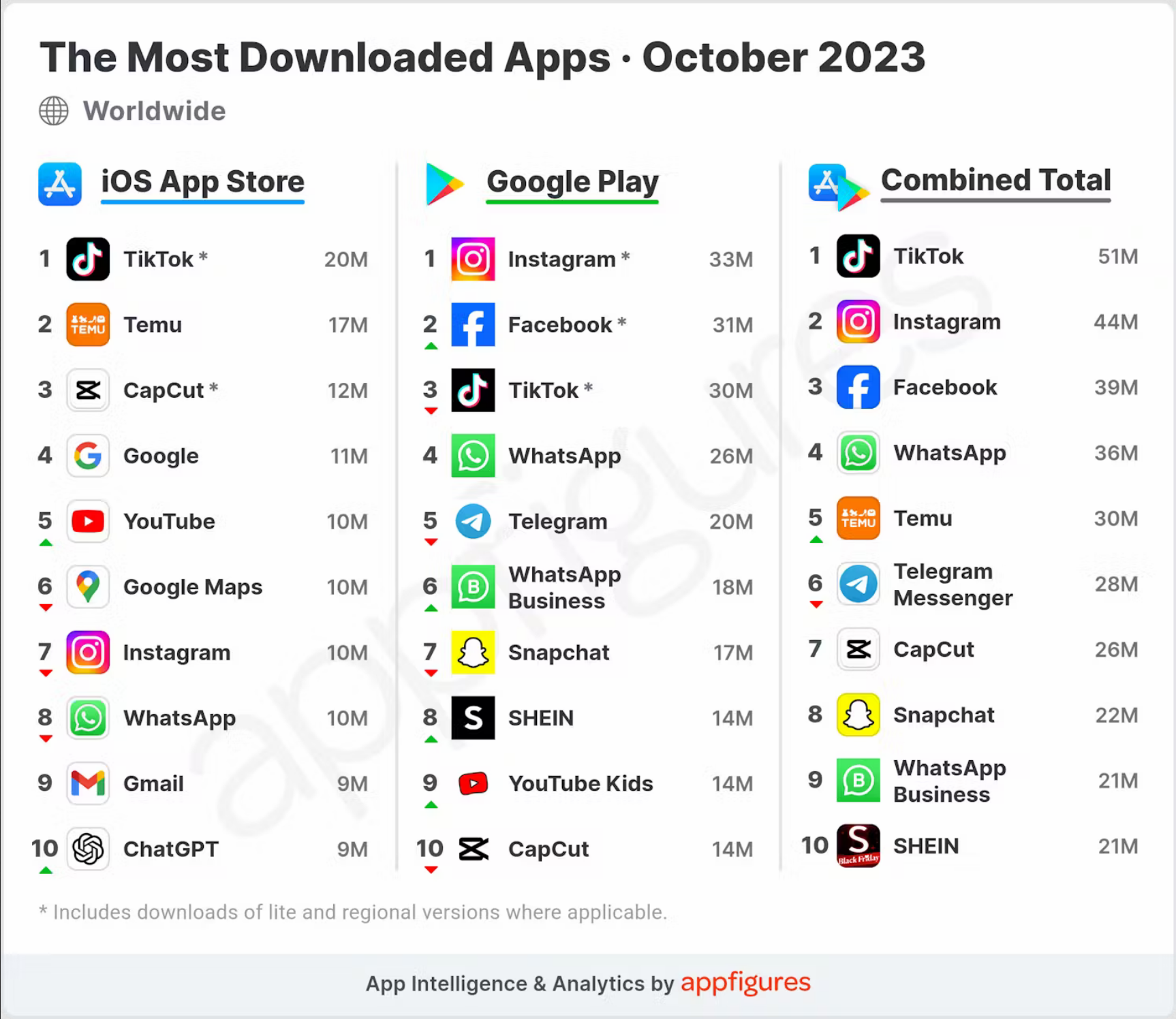 Source: Digital Information World
Source: Digital Information World
Mobile operators who have overlooked customer experience before are now finding themselves at a disadvantage. They’re scrambling to adopt new technologies and trends to meet customer demands and expectations.
While the significance of customer experience in the telecom industry continues to grow, driving digital innovation and the creation of more engaging, personalised, and satisfying experiences should be at the top of operators’ priorities. Those who embrace this change will begin to realise the abundance of benefits that an enhanced customer experience has to offer.
How to improve telecom customer experience?
When a mobile operator is aware of the importance of CX in telecom, they tend to focus on improving it. But the process isn’t so straightforward, and the operators often don’t know where to start.
In this section, we’ll focus on 9 ways operators can improve CX in telecom.
1. Understanding customer needs and expectations
Knowing, understanding, and meeting customer needs and expectations is essential to enhancing customer experience in telecom industry.
When a company gathers information about its customers, it develops a deeper insight into their preferences, behaviours, and needs. This understanding can be leveraged to enhance product development and telecom CX, thereby securing a competitive edge. By tailoring offerings more precisely to the customer base, a company can differentiate itself from competitors and boost sales.
Here are a few ways how operators can achieve this:
- Data Analysis – Big data analytics in telecom plays a crucial role as it enables operators to analyse customer data collected through various channels. It helps operators to understand patterns, preferences, and behaviours, enabling them to make informed decisions and tailor offerings more effectively. It also helps prevent churn and up-sell and cross-sell relevant products and services, which helps increase ARPU in telecom. Overall, data analytics can improve many aspects of an operator – from marketing to customer service, to product. We’ll delve into them a bit later in the blog.
 Source: FinancesOnline
Source: FinancesOnline
- Segmentation – Segmentation means breaking down the customer base into distinct segments based on demographic, psychographic, and behavioural data. In telecom, customers may be segmented by usage level or the way they interact with the product/service. This segmentation allows for more targeted and relevant service offerings. It can mean offering premium plans with higher data caps to high-usage customers or budget-friendly options for cost-conscious segments. According to Segment Report, 49% of customers bought something on impulse because of personalised messages, highlighting the power of segmentation and relevant messaging.
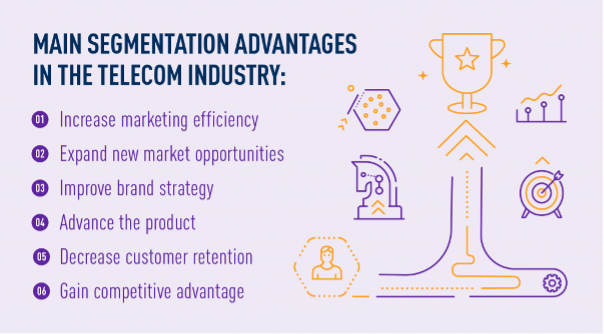 Source: Tasil
Source: Tasil
- Regular surveys and feedback – Operators should engage with their customers regularly through surveys, focus groups, and feedback forms to gather insights into their needs, expectations, and satisfaction levels. According to InMoment, 95% of dissatisfied customers will share their experience with others through word of mouth but only 4% will raise their complaints with the brand, making their concerns go unnoticed by the operators. A continuous loop of feedback allows operators to adapt and respond quickly to customer demands.
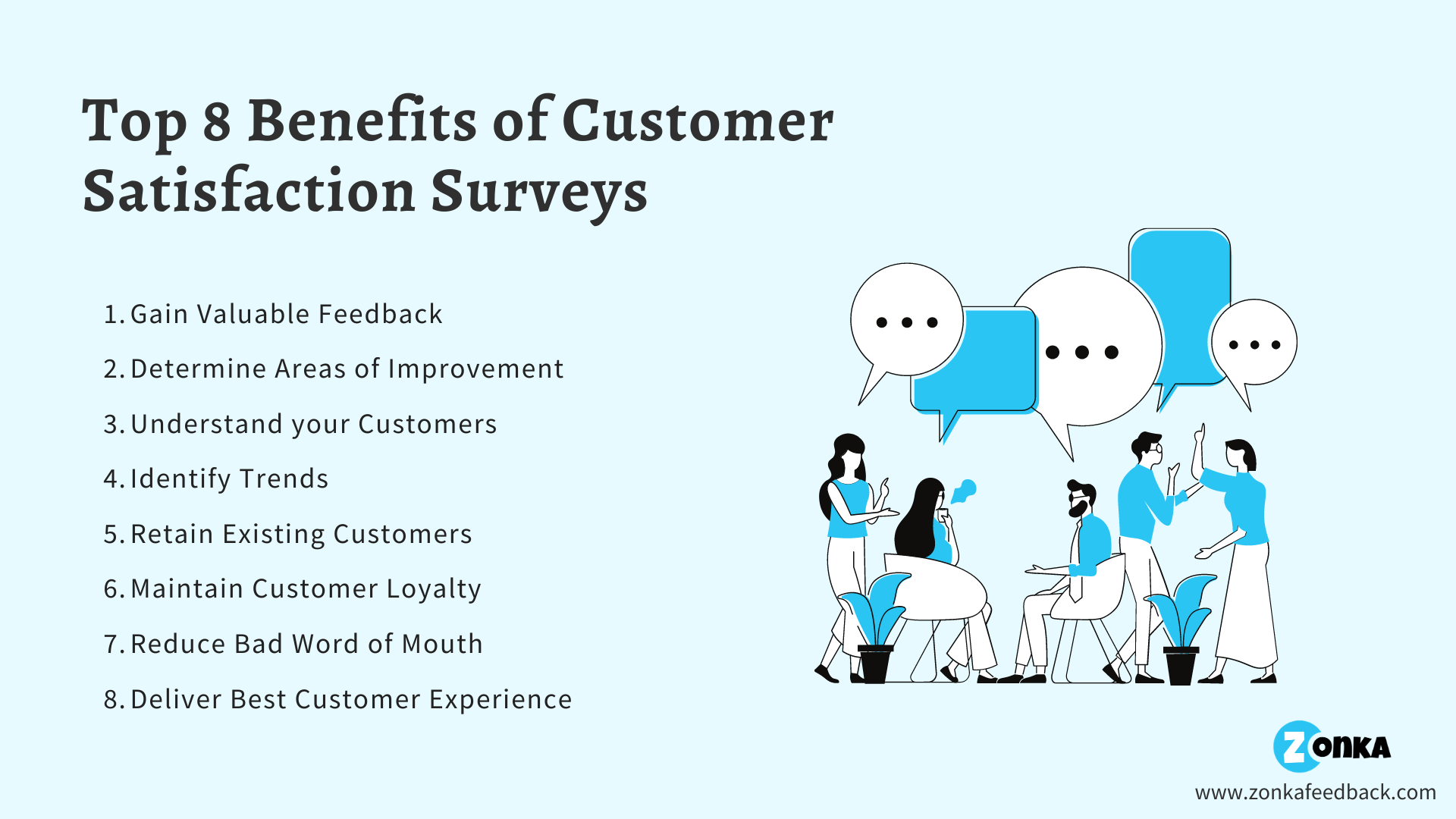 Source: Zonka
Source: Zonka
- Responsive adjustments – Operators who want to stand out with their telecom customer experience must be agile in implementing changes based on customer feedback. This could involve plenty of activities from adjusting service packages, and tweaking network performance, to enhancing customer service protocols to address common concerns or requests.
2. Investing in Quality Service Delivery
Even though the quality of service is what we identified as an “old-school” element of differentiation, it still plays a pivotal role in creating excellent customer experience in telecom industry. Let us explain how.
Infrastructure Investments
Quality service delivery involves continuous infrastructure investments to enhance network reliability and minimize downtimes, ensuring that services remain robust across all customer touchpoints.
It includes upgrading network hardware, like replacing old routers, switches, and other network devices with newer, more efficient models that offer greater capacity and faster processing speeds. These upgrades help in managing larger data loads and reducing bottlenecks that can lead to service disruptions.
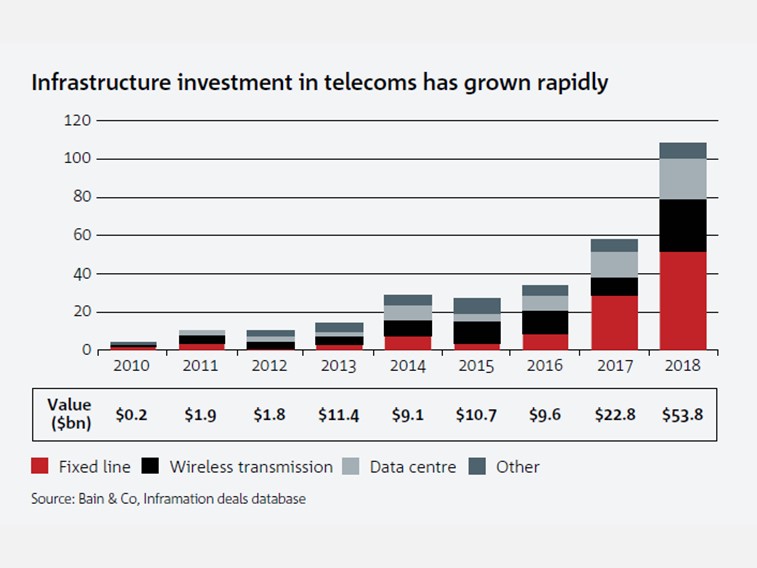 Source: Nab.com.au
Source: Nab.com.au
Investing in expanding network coverage to underserved areas ensures a broader reach. This not only helps in reducing dead zones—areas without coverage—but also enhances user experience by providing consistent service across a wider geographical area.
Another facet of quality service delivery is implementing new, advanced technologies, such as 5G, fibre optics, and satellite communications, which represent significant upgrades over older technologies. Investing in these areas can drastically improve the speed and reliability of network services, offering customers a seamless and uninterrupted experience.
Quality Assurance
Furthermore, regular quality assurance practices are essential for maintaining and enhancing the quality of service in the telecommunications industry.
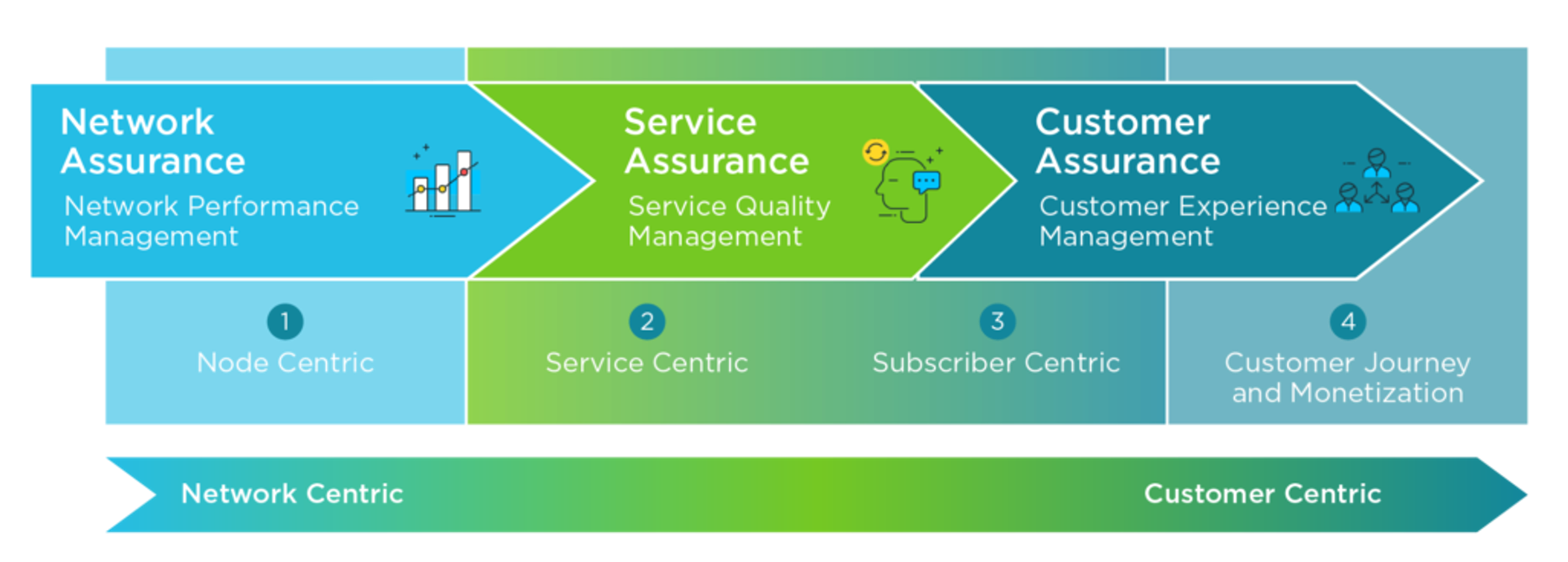 Source: Inceptum
Source: Inceptum
These practices involve systematic network testing on network components and systems to help identify potential vulnerabilities or performance issues that could lead to service degradation or failures. This includes stress testing the network under high-traffic scenarios to ensure it can handle peak loads.
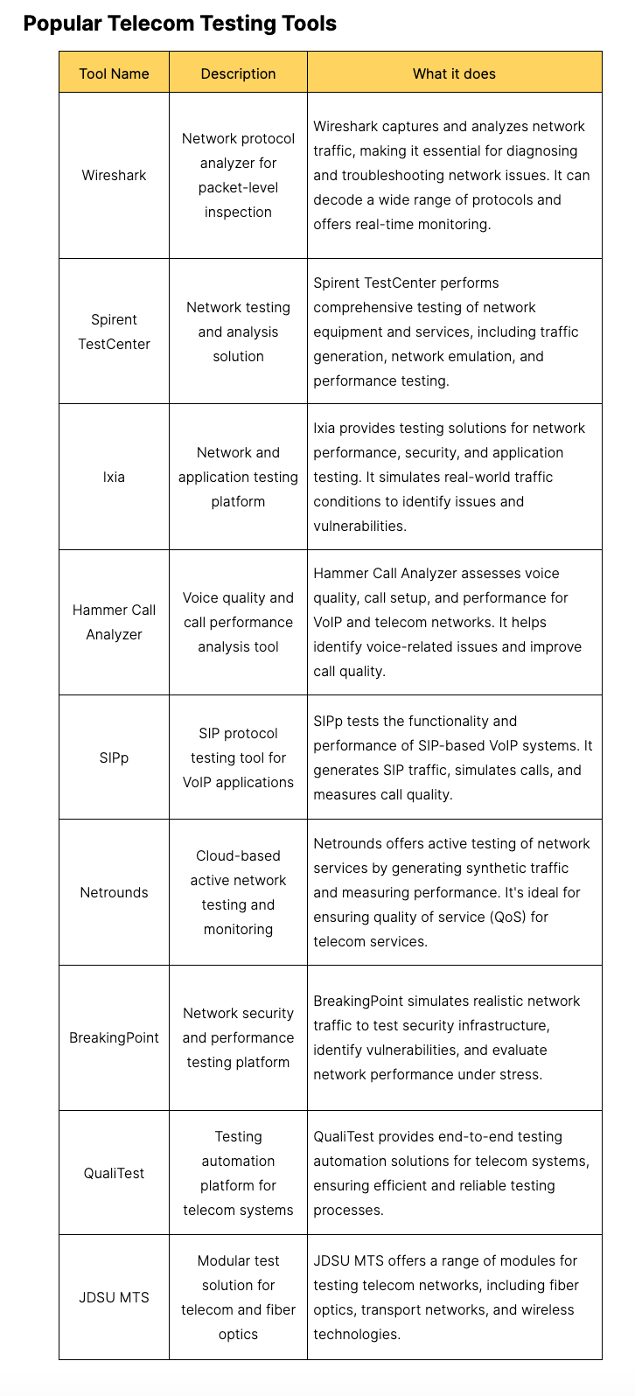 Source: Katalon
Source: Katalon
Another crucial aspect is the implementation of tools for continuous monitoring that track the performance and health of the network in real-time. These tools can alert technicians to anomalies or degradations in service quality, allowing for immediate corrective actions before customers are significantly impacted.
Quality assurance practices should not be limited to reacting to problems after they occur. Instead, proactive preventive maintenance should be scheduled to help prevent issues from arising in the first place. This approach includes regular inspections and the replacement of ageing components before they fail.
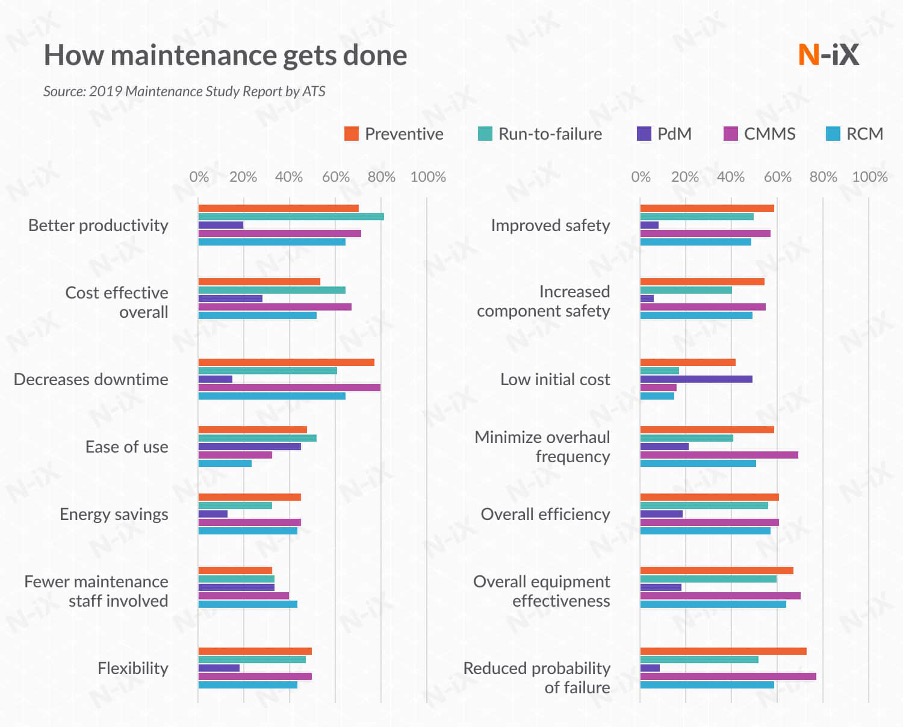 Source: N-iX
Source: N-iX
Emergency Response
Finally, developing efficient emergency response strategies is crucial for addressing service interruptions swiftly and efficiently. These strategies ensure that when disruptions occur—whether due to technical failures, natural disasters, or cyberattacks—there is a clear, structured response in place to minimise downtime and restore services as quickly as possible.
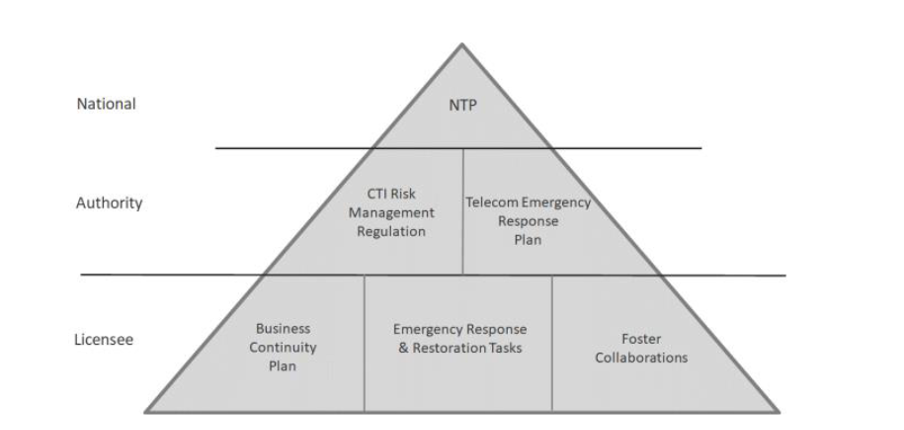 Source: Telecom Emergency Response Plan
Source: Telecom Emergency Response Plan
One of the key aspects involved in creating these strategies is to implement advanced monitoring systems that can detect anomalies and potential threats in real time. These systems help in identifying issues before they escalate into major disruptions, allowing for immediate response.
Another crucial aspect is to develop detailed response plans that outline specific procedures for various types of emergencies. These plans should include step-by-step actions for the initial response, escalation paths, and recovery processes. They should also identify key personnel responsible for executing each step of the plan.
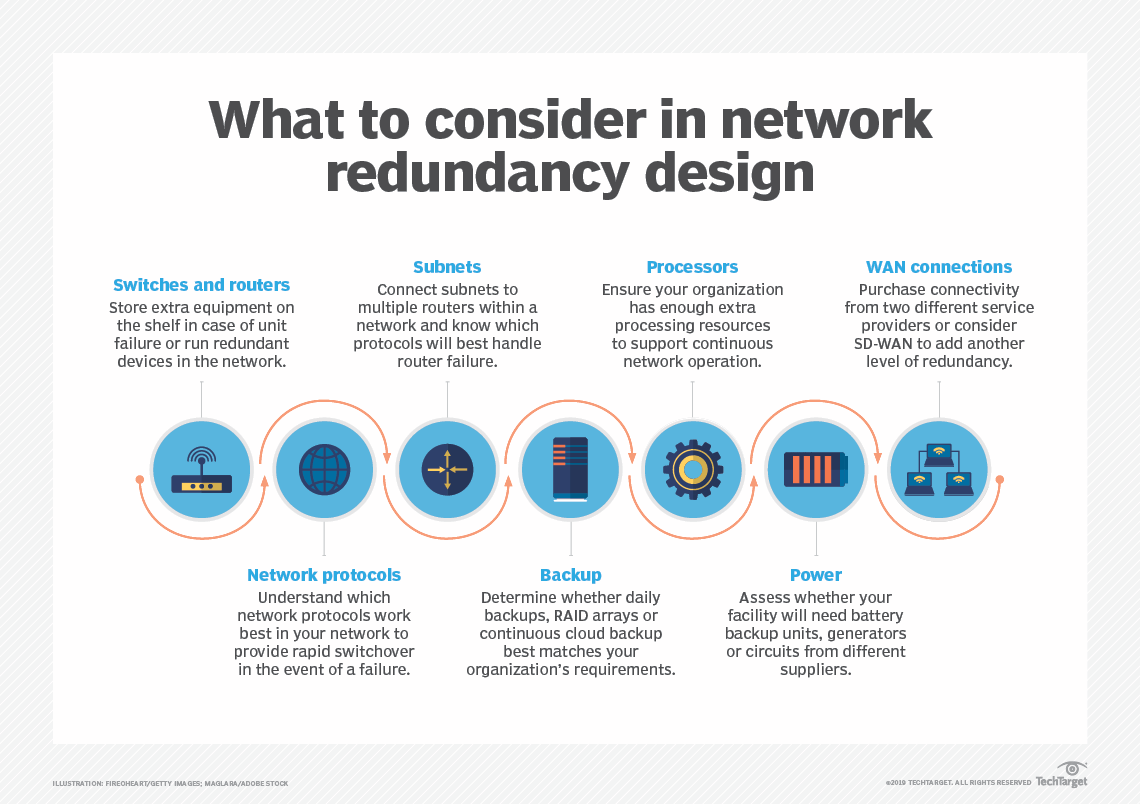 Source: TechTarget
Source: TechTarget
Investing in redundancy within the network infrastructure is another key aspect. It ensures that there are backup systems that can take over immediately if the primary system fails. Additionally, regular backups of critical data ensure that no essential information is lost during incidents and can facilitate a quicker recovery.
All in all, these strategies enable telecom operators to quickly restore services and mitigate any inconvenience to customers, thereby reinforcing trust and satisfaction. By prioritising these elements, telecom companies can not only improve their operational efficiencies but also strengthen their market position by consistently delivering superior service quality.
3. Personalisation of Services
Personalising services play a pivotal role in enhancing telecom CX, satisfaction, and loyalty. In fact, 84% of consumers say being treated like an individual, not a number, is critical to preventing customer attrition. In the hypercompetitive telecom industry, this ethos is even more important.
Personalised customer experience means designing products, services, and interactions to meet customers’ unique and individual requirements. This can be achieved through several strategies:
Custom Plans
Custom plans enable customers to tailor their telecom services according to their individual or business needs, preferences, and budgets. This approach involves providing flexible options that can include varying amounts of data, voice minutes, text messages, and even international calling packages. By enabling customers to build their plans, telecom companies can not only increase customer satisfaction but also attract a wider audience who might be looking for something different from standard offerings.
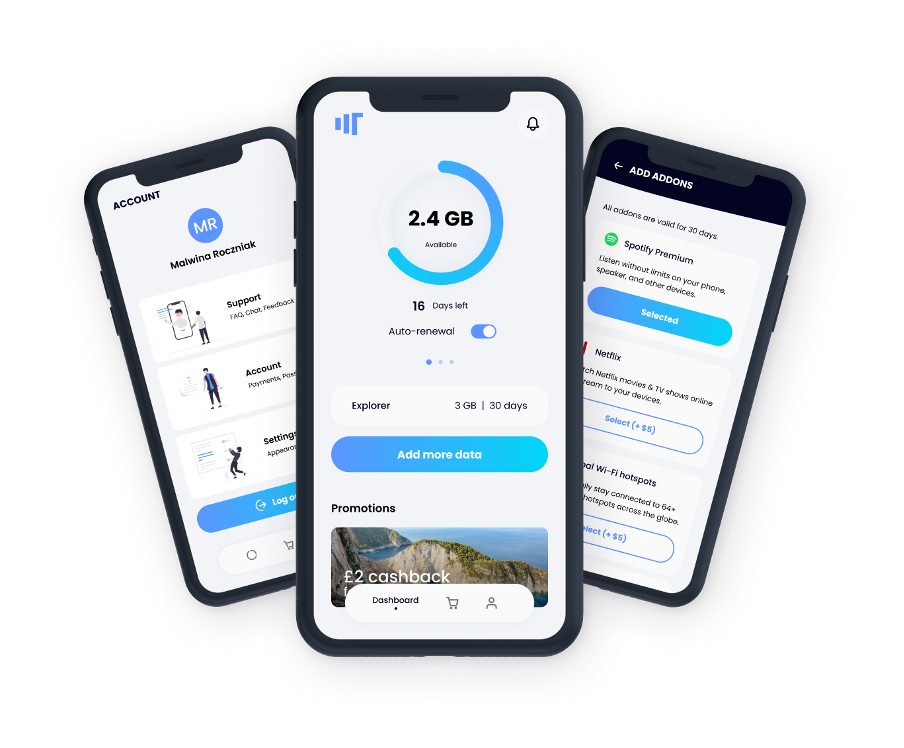
To give an example, T-Mobile USA introduced the “T-Mobile One” plan. It started as a simple, flat-rate plan with unlimited data, talk, and text. However, recognizing the diverse needs of their customer base, T-Mobile allowed customers to enhance their base plan with various add-ons like “One Plus,” which provided additional benefits such as unlimited mobile hotspot usage at 4G LTE speeds, enhanced streaming quality, and faster international data speeds.
The flexibility to customise their plans not only attracted customers who were looking for simplicity but also those who wanted more control over their mobile services. This approach helped T-Mobile differentiate itself in a highly competitive market, contributing to significant customer growth and reduced churn by addressing the specific needs of different customer segments directly.
Targeted Promotions
Operators can leverage detailed customer data analytics to craft discounts and offers that are not only compelling but also highly relevant to different customer segments. This method relies heavily on the analysis of customer data, including usage patterns, service preferences, billing history, and demographic information. By understanding these aspects, companies can create highly personalised marketing campaigns that are more likely to resonate with the target audience.
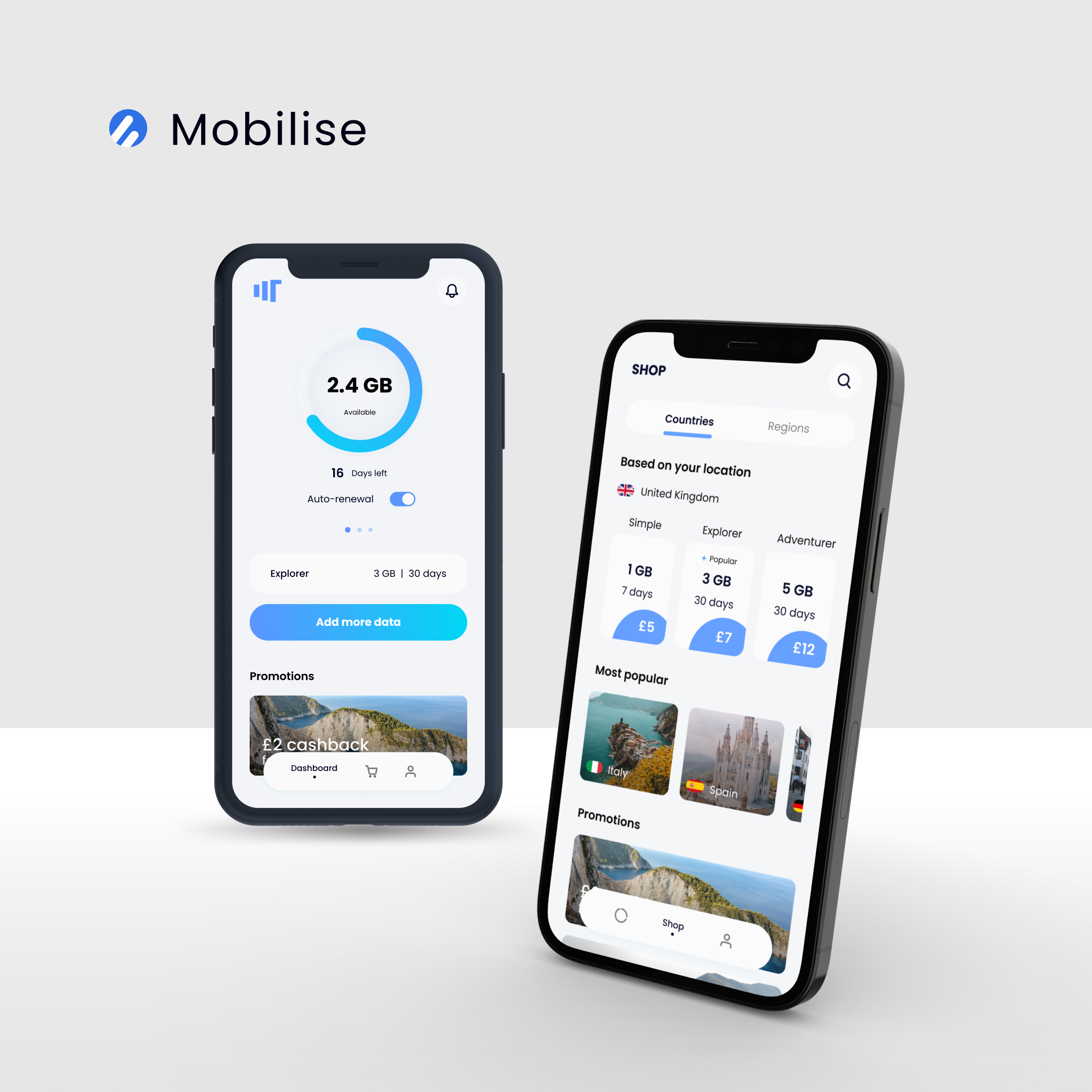
For example, a telecom company might analyse data to identify a segment of customers who frequently exceed their monthly data allowances. For these customers, the company could create a targeted promotion offering a discounted upgrade to a higher data plan. This not only addresses the customers’ needs by providing more data at a better price but also enhances revenue for the company by upselling a higher-tier service.
Example of a Successful Targeted Promotion:
One notable example is Verizon’s targeted promotion approach, which they implemented a few years ago. Verizon used data analytics to segment their customer base into various groups based on their usage patterns and preferences. One particular campaign targeted users who were frequently travelling internationally. Verizon offered these customers a special international roaming package at a discounted rate. This promotion not only catered to the specific needs of frequent travellers but also prevented them from switching to competitors with better international rates.
The campaign was successful because it made the customers feel understood and valued, as the offer directly addressed a common pain point—high international roaming charges. By leveraging precise customer segmentation and targeted promotions, Verizon was able to enhance customer satisfaction, reduce churn rates, and increase.
Feedback Incorporation
Feedback incorporation involves continuously adapting and refining service offerings based on direct customer feedback. This approach is crucial for continuous improvement and customer satisfaction as it helps companies understand what is working well and what needs to be improved from the customer’s perspective. By acting on this feedback, companies demonstrate their commitment to customer care and their willingness to adapt based on user experiences.
For example, AT&T, which experienced criticism regarding its network coverage issues raised by customers through multiple feedback channels, invested heavily in network improvements and infrastructure expansion. More importantly, they launched the “Mark the Spot” app, which enabled customers to report specific locations where they experienced network problems like dropped calls or slow data access.
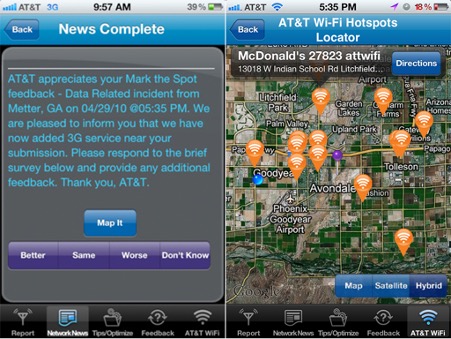 Source: AppAdvice
Source: AppAdvice
This app allowed AT&T to gather real-time, location-specific feedback that could be used to directly improve network performance in areas identified by customers. By addressing these specific issues, AT&T not only improved its service quality but also demonstrated a clear commitment to listening to and acting on customer feedback. This initiative helped improve customer perceptions of AT&T’s responsiveness and dedication to service quality improvement.
4. Leveraging Advanced Technologies
Embracing new, advanced technologies is another key step in improving telecom customer experience. Technologies help operators revolutionise their service offerings and operational efficiency. We’ll focus on two technologies in this blog: AI and eSIM.
AI
Artificial Intelligence, or AI, enables operators to offer proactive solutions and personalised experiences due to its ability to analyse vast amounts of data and predict customer behaviours and needs. AI, therefore, represents a transformative shift towards more efficient and personalized customer interactions.
But what about customers? Do they want to share their data to receive more personalisation? Research shows that 76% of customers would be eager to let operators use their data to receive recommendations that are tailored to their specific needs and preferences. Moreover, 59% of them are willing to spend more to get a plan specifically customised to their needs across voice, data, entertainment, and other personalised services.
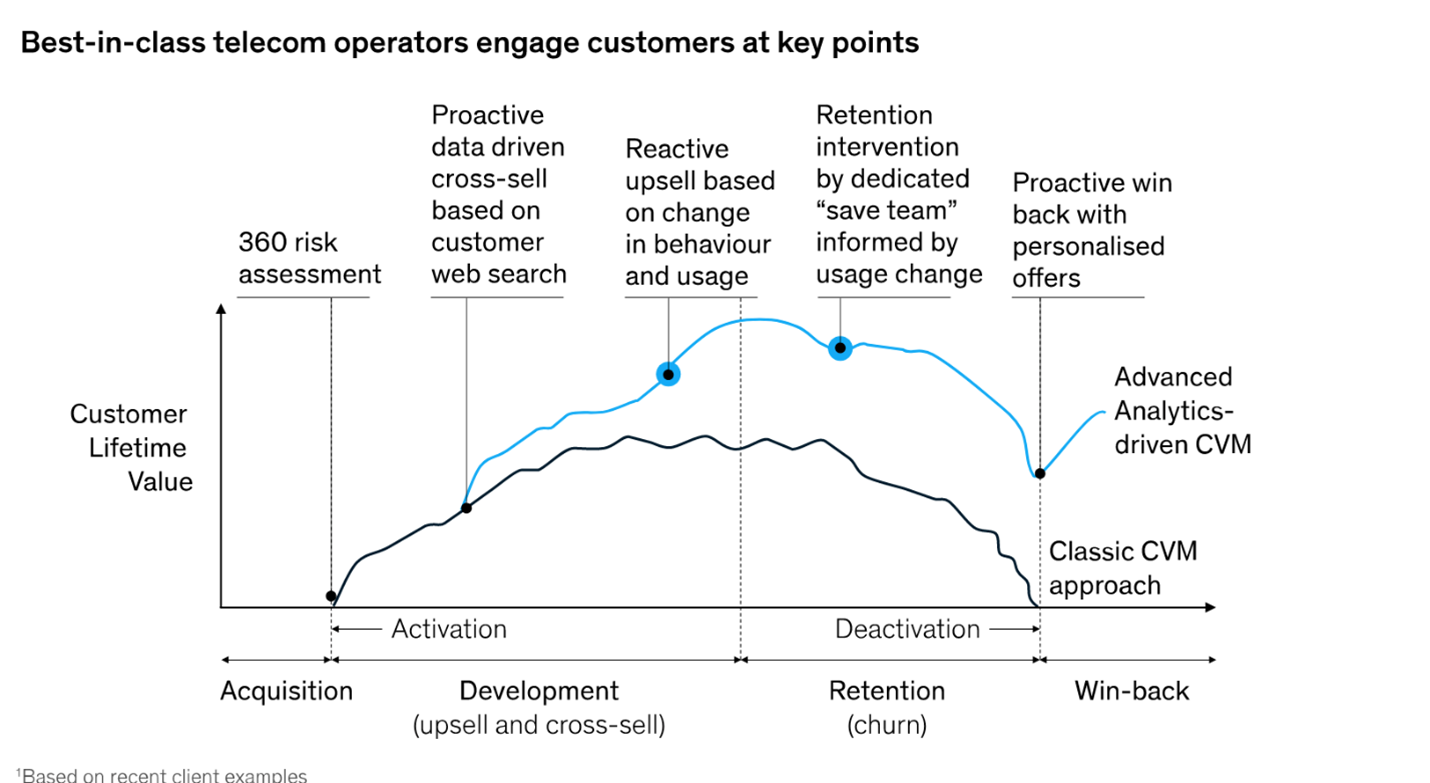 Source: McKinsey
Source: McKinsey
AI can be leveraged in several powerful ways to enhance the customer service experience:
- Predictive customer service – AI algorithms can analyse past customer interaction data to predict future needs or problems, allowing customer service teams to proactively address issues before the customer even notices them. For example, if a customer frequently experiences service disruptions at certain times, AI can predict these patterns and enable preventative solutions.
- Chatbots and virtual assistants – AI-driven chatbots and virtual assistants can handle a wide range of customer inquiries without human intervention, from troubleshooting common issues to managing account changes. These tools are available 24/7, providing immediate responses to customer queries and reducing wait times. They can escalate more complex issues to human agents, ensuring that customers always receive the level of care they need.
- Automated problem resolution – AI can automate certain problem-resolution processes, such as resetting passwords, troubleshooting service issues, or configuring settings without human intervention. This not only speeds up resolution times but also frees up human agents to handle more complex queries.
eSIM
Consumer eSIM, also known as embedded SIM, represents a substantial shift from traditional physical SIM cards to a more integrated, digital solution that can be activated and managed entirely online, helping operators to streamline service management and offer greater flexibility.
RECOMMENDED READING
eSIM enables operators to streamline and improve telecom customer experience in many aspects:
- Simplified activation and user onboarding – eSIM technology eliminates the need for physical SIM cards and the associated logistical challenges. Customers can activate and set up their mobile service instantly without visiting a store or waiting for a SIM card to be shipped. This seamless process significantly enhances the initial customer experience and simplifies device setup.
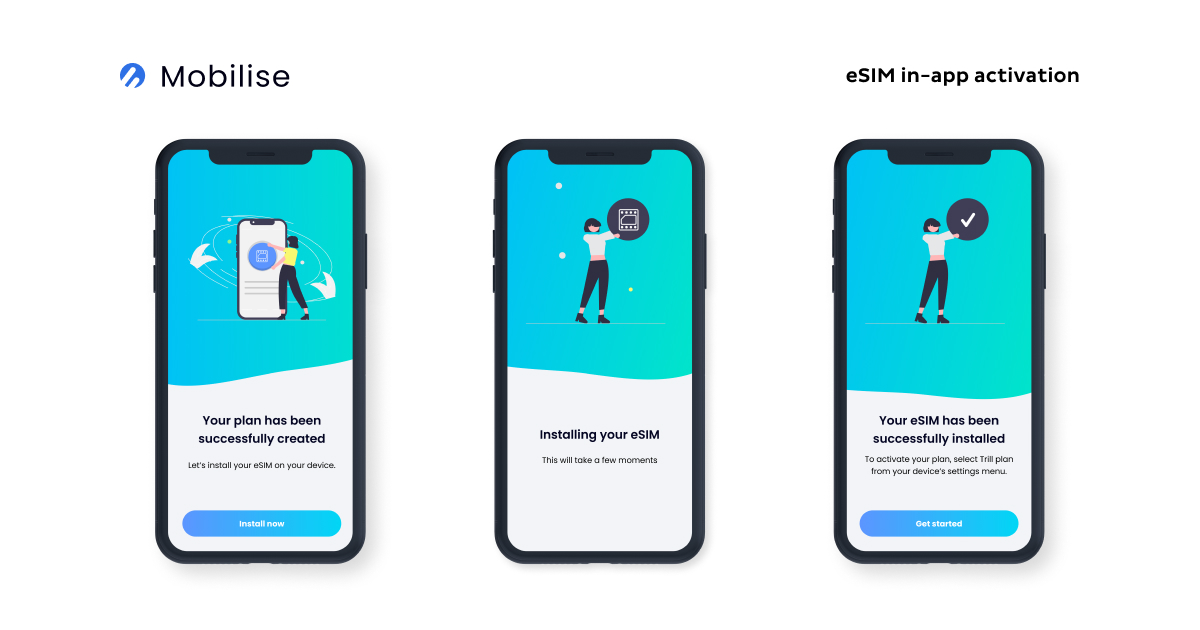
- Improved Service Flexibility – eSIM allows customers to switch between network providers without the physical constraints of changing SIM cards. This flexibility is particularly advantageous for travellers who need to switch to local carriers easily or for those looking to take advantage of different network promotions without the hassle of handling multiple physical SIMs.
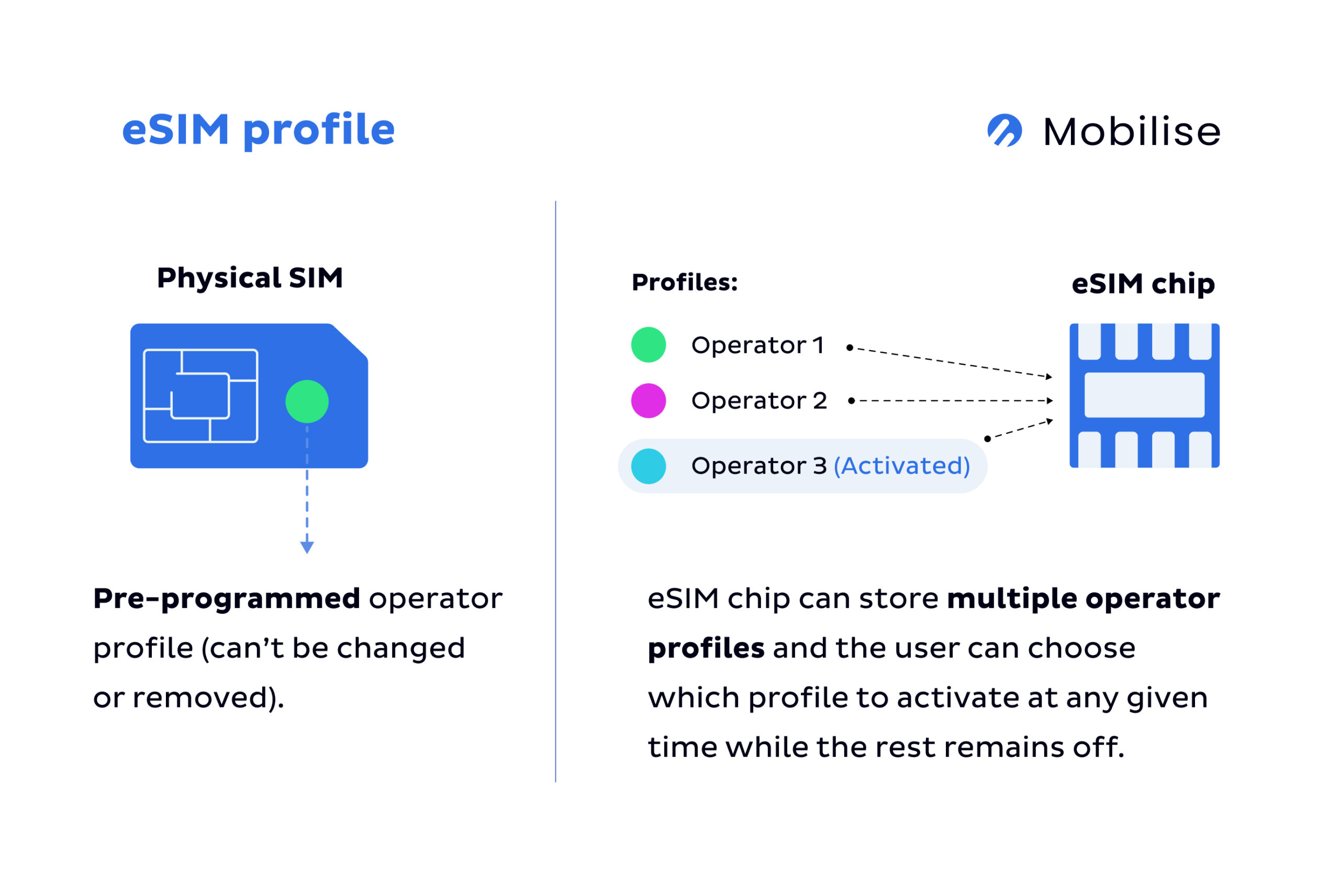
- Increased Security – The embedded nature of an eSIM provides enhanced security compared to physical SIM cards, which can be lost or stolen. eSIMs are integrated into the device’s hardware, making it more difficult for unauthorized users to tamper with the SIM’s data.
RECOMMENDED READING
- Environmental Benefits – By reducing the need for plastic SIM card production and the associated packaging and shipping, eSIMs offer an environmentally friendly alternative that aligns with the growing consumer demand for sustainable products and services.
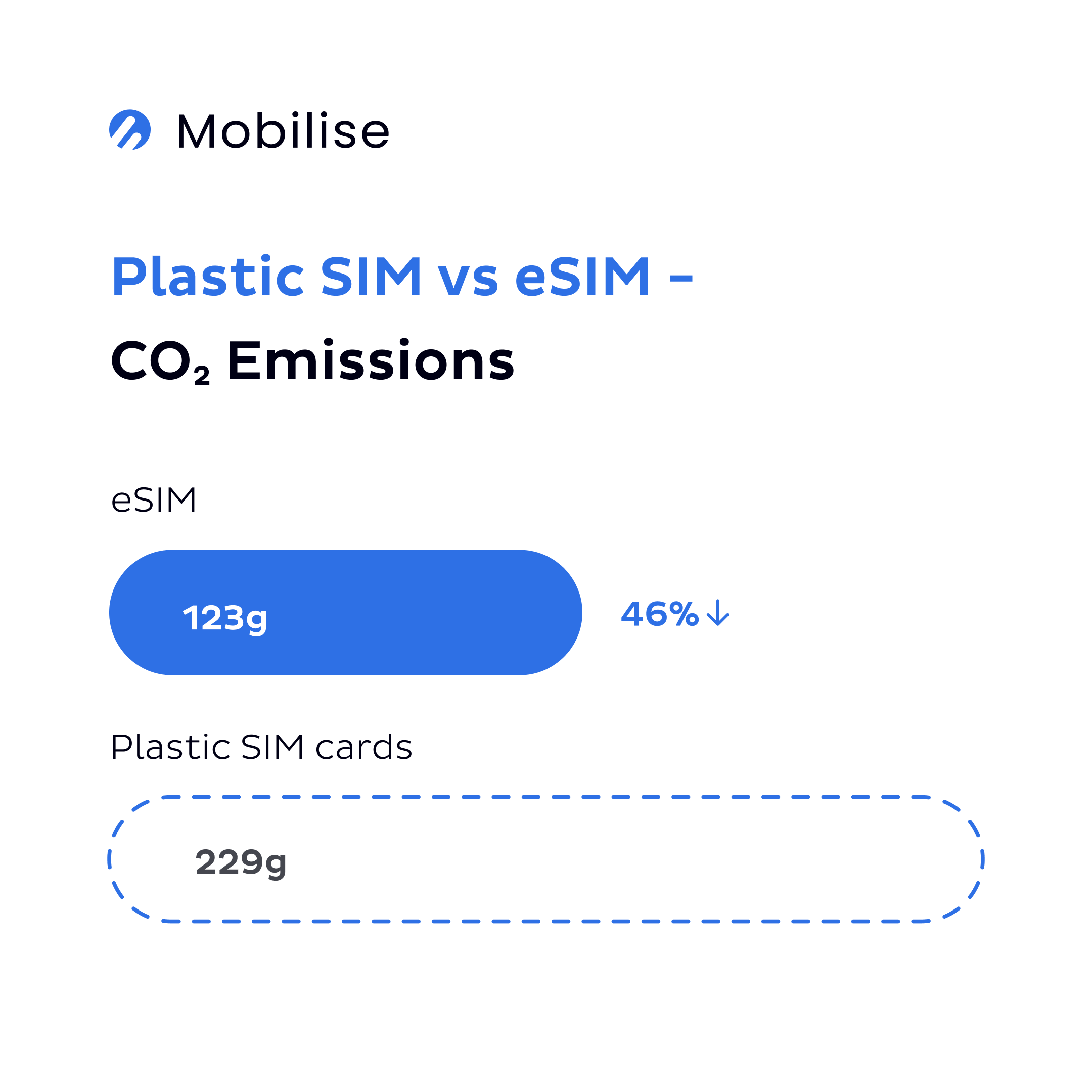
5. Enhancing Digital Customer Interaction
In today’s digital age, enhancing customer interaction through digital channels plays a pivotal role for operators aiming to improve telecom customer experience and streamline service delivery. Several strategies can be employed:
- Mobile App Features
- Real-time Usage Stats – Implement features that allow customers to monitor their data usage, voice minutes, and message consumption in real time. This transparency helps customers manage their plans better and avoid unexpected charges.
- Plan Adjustments – Provide options within the app for customers to easily change or upgrade their plans based on their current needs without the need to call customer service or visit a store.
- Bill Payment – Integrate secure and straightforward bill payment features within the mobile app, allowing customers to manage their payments effortlessly from their devices.

- User Experience Design
- Intuitive Navigation – Design the user interface to be as intuitive as possible, minimising the learning curve and making the app easy to use for all age groups and tech-savviness levels.
RECOMMENDED READING
- Consistency – Ensure that the design is consistent across all digital platforms, whether it’s the mobile app, the website, or other digital services. Consistency helps in building user confidence and reducing confusion.
- Speed and Responsiveness – Optimise the app and other digital services to load quickly and respond promptly to user inputs, which is crucial for keeping the users engaged and satisfied with the digital interaction.
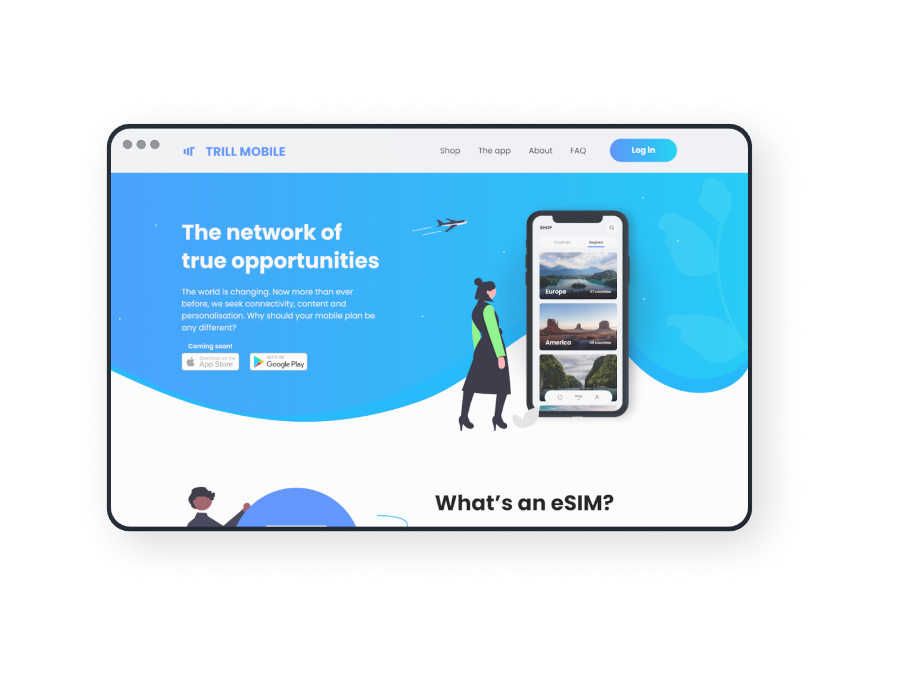
- Digital Accessibility
- Inclusive Design – Make sure that digital platforms are accessible to everyone, including those with disabilities. This includes visual design considerations such as colour contrast for those with visual impairments and text scaling.
- Screen Reader Compatibility – Ensure compatibility with screen readers and other assistive technologies that help users with disabilities navigate and interact with your digital content.
- Simple Language – Use clear, concise, and simple language to communicate information. This approach helps users with cognitive disabilities and also benefits those whose first language is not English.
RECOMMENDED READING
6. Empowering Customer Service with Technology
In the competitive landscape of the telecom industry, enhancing customer service in telecom industry with advanced technology is crucial for improving service quality and customer satisfaction. Here are two strategic ways to leverage technology in customer support:
- Omnichannel Strategy
- Consistent Customer Experience – Develop an omnichannel strategy that ensures customers receive a consistent experience across all platforms. Whether interacting through social media, mobile apps, or in-store, the service quality should remain uniform, reinforcing a positive brand image.
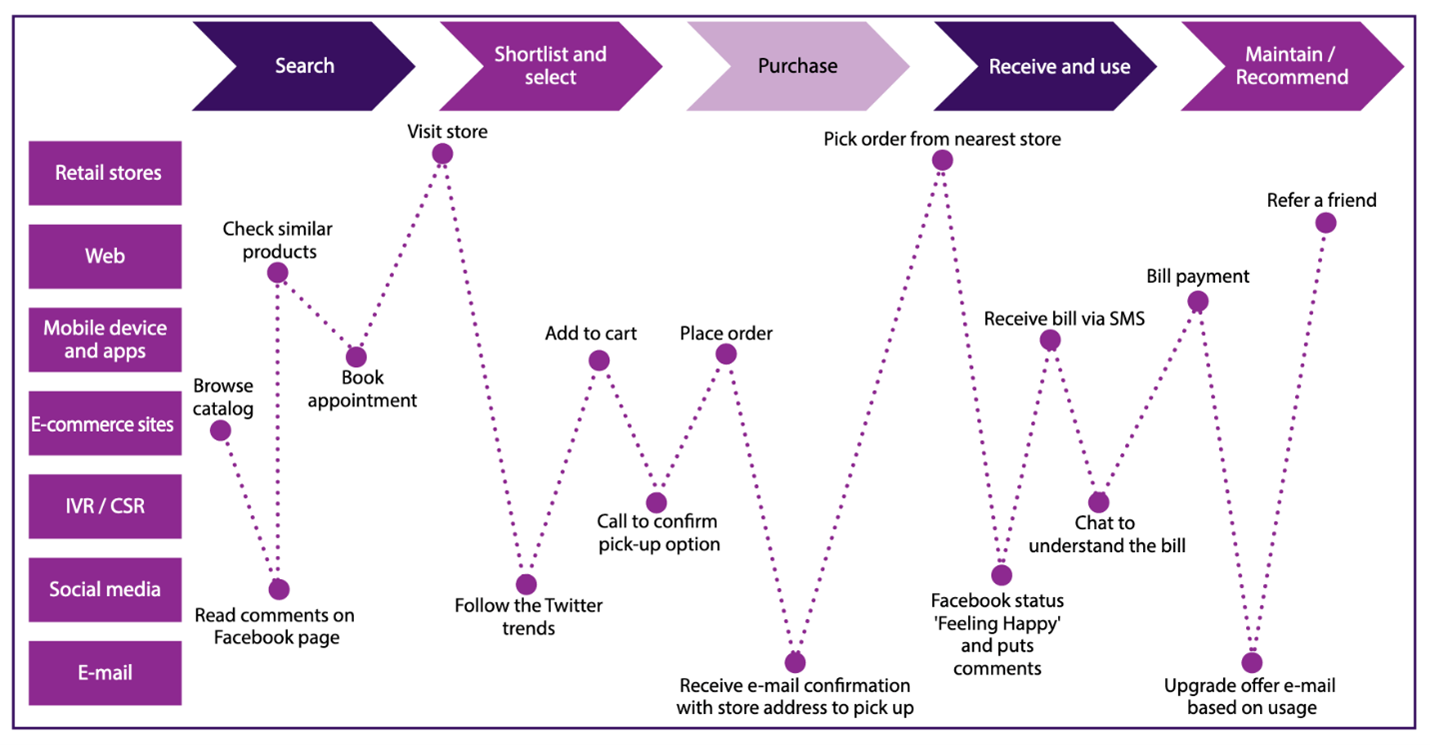 Source: Infosys
Source: Infosys
- Channel Flexibility – 89% of customers get frustrated when they have to repeat their questions to multiple customer service agents. Therefore, enables customers to start their service interaction on one channel and seamlessly continue on another without having to repeat information. This flexibility enhances the customer experience by providing convenience and acknowledging their preferences in communication.
The cost of poor customer service is estimated at least $75 billion per year and is increasing rapidly.
NewVoiceMedia
- Advanced CRM Systems
- Personalised Customer Interactions: Utilise advanced CRM systems that not only store comprehensive customer data but also analyse this data to understand customer behaviours, preferences, and history. This allows customer service agents to personalize interactions and make informed recommendations based on past interactions and preferences.
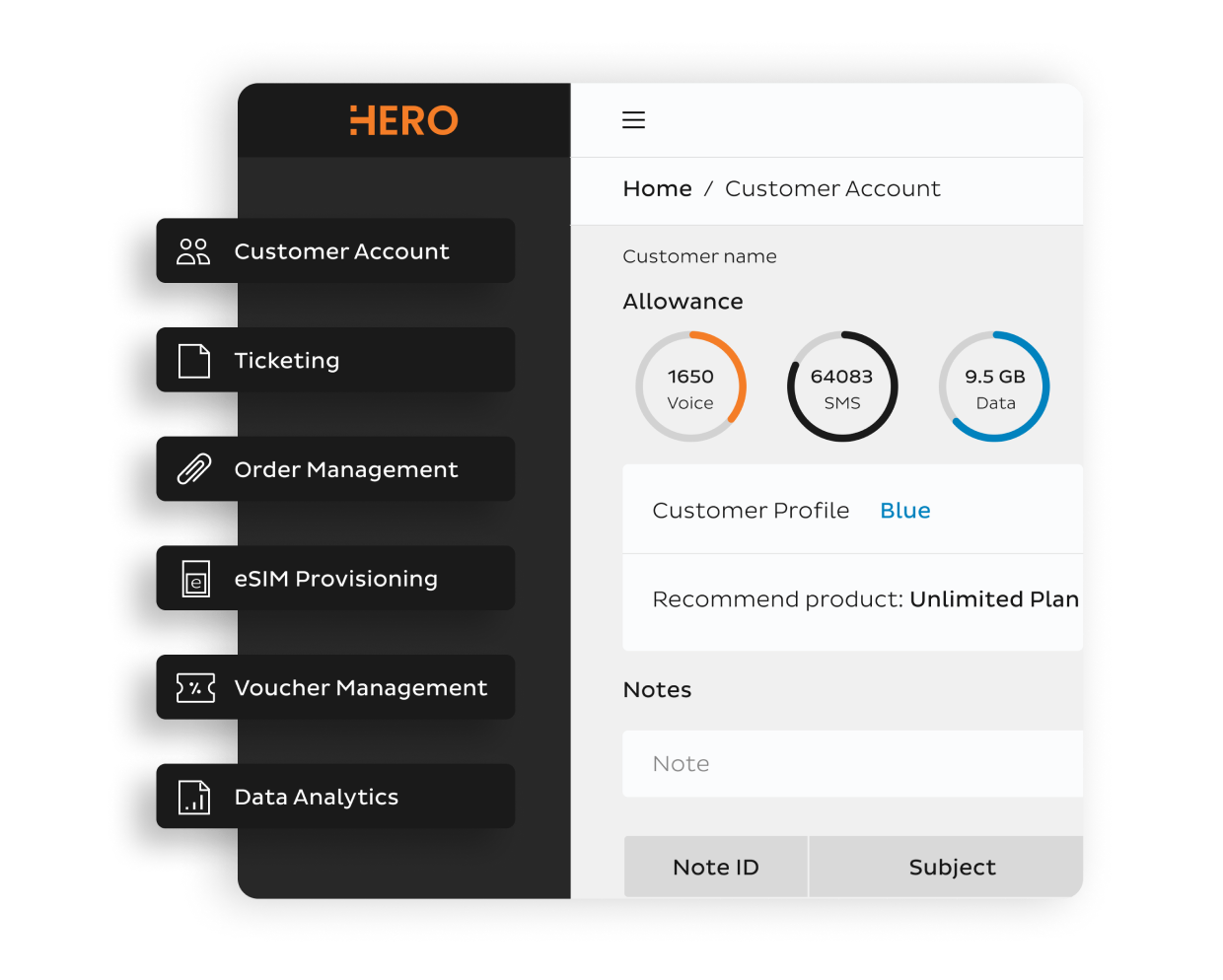
- Proactive Service Suggestions – These CRM systems can also identify opportunities for proactive customer engagement, such as notifying customers about plan upgrades, new services, or promotional offers that align with their usage patterns. This proactive approach can improve customer loyalty and increase satisfaction.
According to research, U.S. companies lose more than $62 billion annually due to poor customer service. And 7 out of 10 consumers say they’ve spent more money to do business with a company that delivers great service.
By integrating these technologies, telecom companies can significantly enhance their customer support capabilities. Advanced CRM systems ensure efficient and personalised customer service, while a robust omnichannel strategy provides a seamless and consistent experience across all customer touchpoints.
Together, these technologies empower telecom companies to meet modern customer expectations effectively, fostering stronger customer relationships and driving business success.
7. Implementing Feedback Loops
Implementing effective feedback loops is essential for telecom companies aiming to continuously improve their services and enhance customer satisfaction. These feedback loops not only help in understanding customer needs but also foster a sense of involvement and value among customers.
Firstly, active listening programs involve developing structured channels such as customer surveys, focus groups, and digital forums where customers can freely express their views and concerns. These channels should be easily accessible and actively promoted to encourage customer participation.
Additionally, training customer service representatives in active listening skills is crucial. Such training helps them better understand and accurately record customer feedback during interactions, ensuring that nuanced feedback is captured and addressed.
Furthermore, feedback Implementation requires a systematic process to analyse the feedback collected. Data analytics play a critical role in identifying common themes or recurring issues that need attention. The insights gathered are then turned into actionable steps, which might involve revising service protocols, adjusting product offerings, or enhancing user interfaces based on customer suggestions. This process often necessitates cross-departmental collaboration, involving service design, marketing, and technical support to integrate solutions effectively.
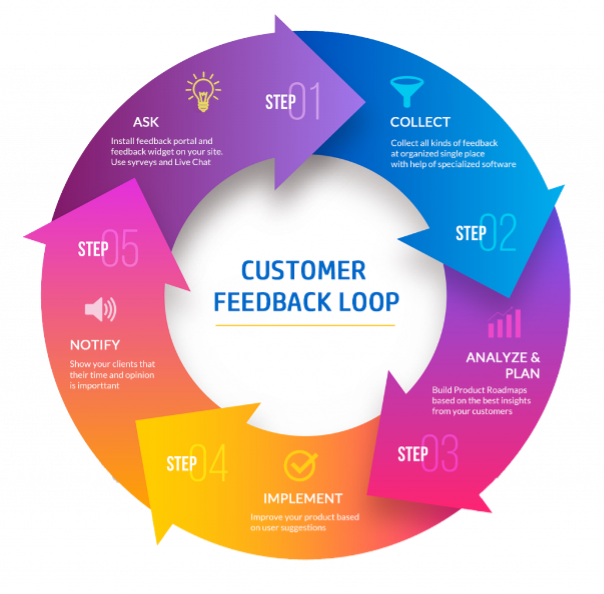 Source: Deskera
Source: Deskera
Lastly, transparent communication with customers is key to building trust and maintaining a positive relationship. Regularly acknowledging the feedback received, communicating progress updates, and sharing timelines and expected outcomes of the improvements being made are all part of this transparency. Highlighting specific instances where customer feedback has led to significant changes or improvements not only celebrates the customer’s contribution but also promotes a culture of continuous improvement.
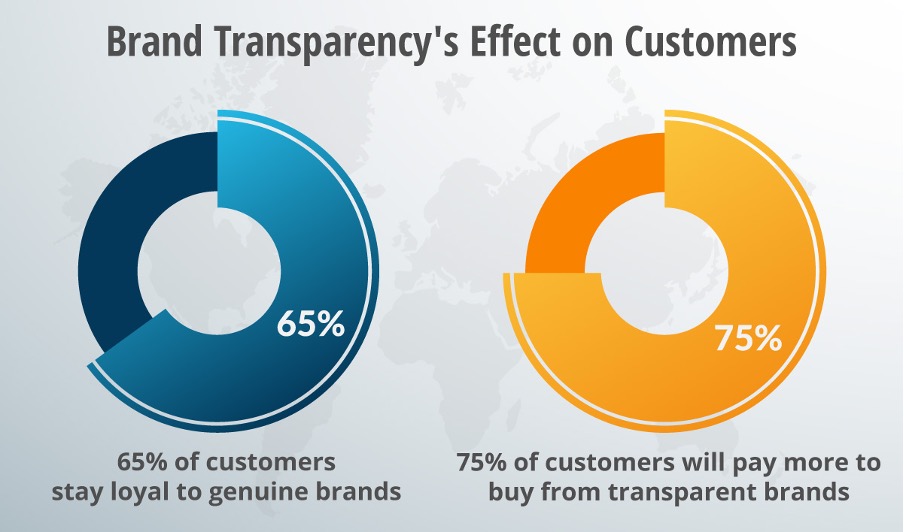 Source: Canto
Source: Canto
By weaving these strategies into their operations, telecom companies can create robust feedback loops that not only refine their services but also enhance customer loyalty and satisfaction. Active listening, diligent feedback implementation, and transparent communication are the cornerstones that demonstrate a company’s commitment to its customers and their experiences.
8. Ensuring Transparency and Fairness
Expanding on the last point from the previous section, maintaining a high standard of transparency and fairness is crucial for building and sustaining customer trust and loyalty in the telecom industry. This commitment not only enhances telecom customer experience but also strengthens the company’s reputation. Below we discuss three ways in which telecom companies can actively promote transparency and fairness in their operations:
- Transparent Billing – it’s fundamental to ensuring that customers feel valued and respected. It involves communicating all charges, fees, and billing methods to customers, ensuring there are no hidden costs that might surprise them later.
This can be achieved by providing detailed, easy-to-understand billing statements and offering explanations for all charges through customer service channels. Additionally, companies should ensure that any changes to billing structures or rates are communicated well in advance, giving customers enough time to understand these changes and make informed decisions.
Britons overspend as much as £530 million each year on bundled contracts – contracts that combine the price of a handset with airtime costs for minutes, texts and data.
Financial Times
- Fair Treatment Policies – these policies are essential for fostering a positive and inclusive customer environment. Developing and enforcing these policies involves ensuring that all customers, regardless of their background or the level of service they subscribe to, are treated with equal respect and courtesy. This includes fair access to promotional offers, support services, and the opportunity to provide feedback. Telecom companies must regularly review and update their policies to address any emerging issues or changes in societal norms to maintain fairness in their customer interactions.
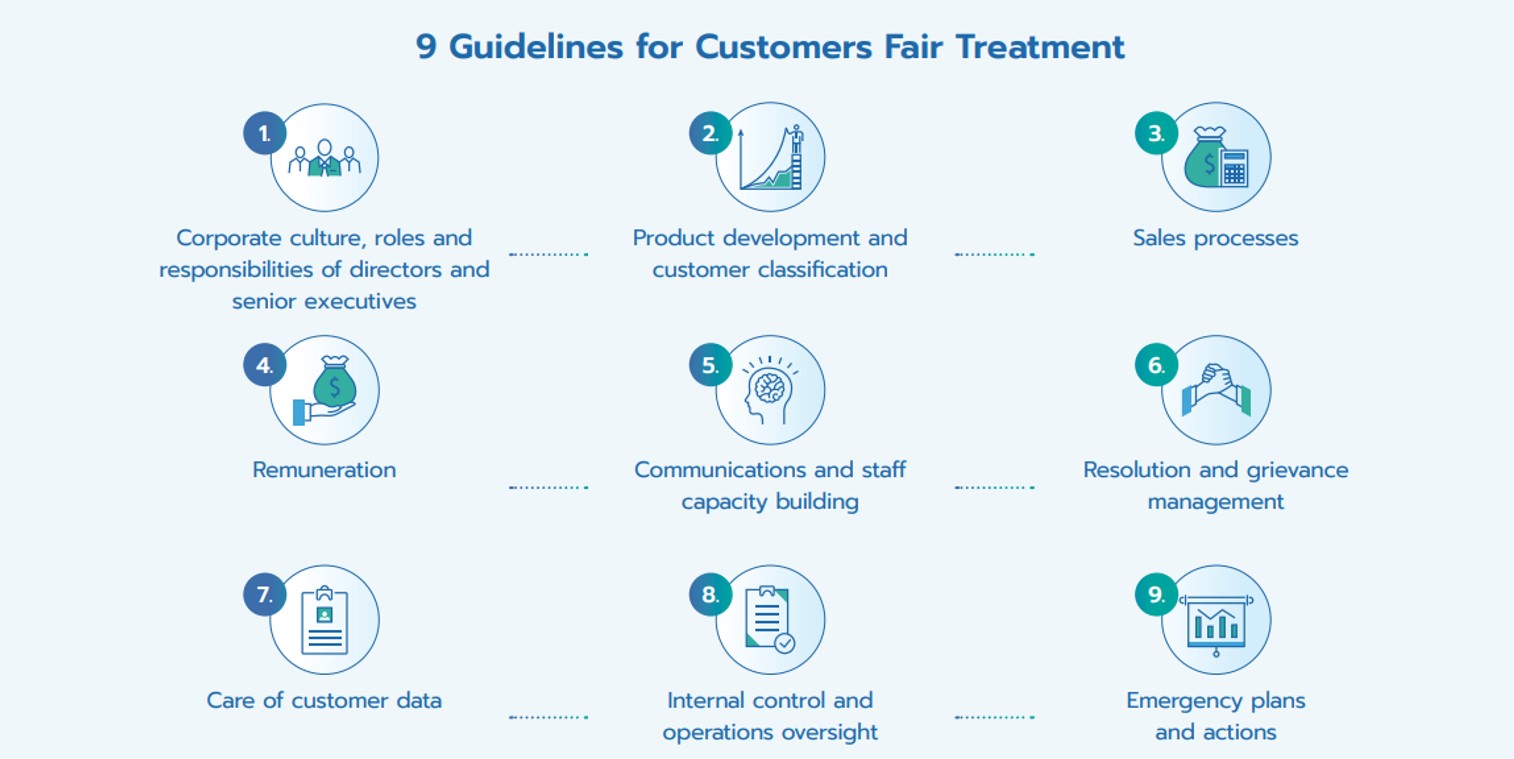 Source: Tisco
Source: Tisco
- Privacy Protection – it plays a critical role in reinforcing customer trust. In an age where data breaches are common, telecom companies must uphold strict data privacy standards and ensure transparent data usage policies. This means not only adhering to all relevant laws and regulations concerning data protection but also going beyond compliance to implement best practices in data security and transparency.
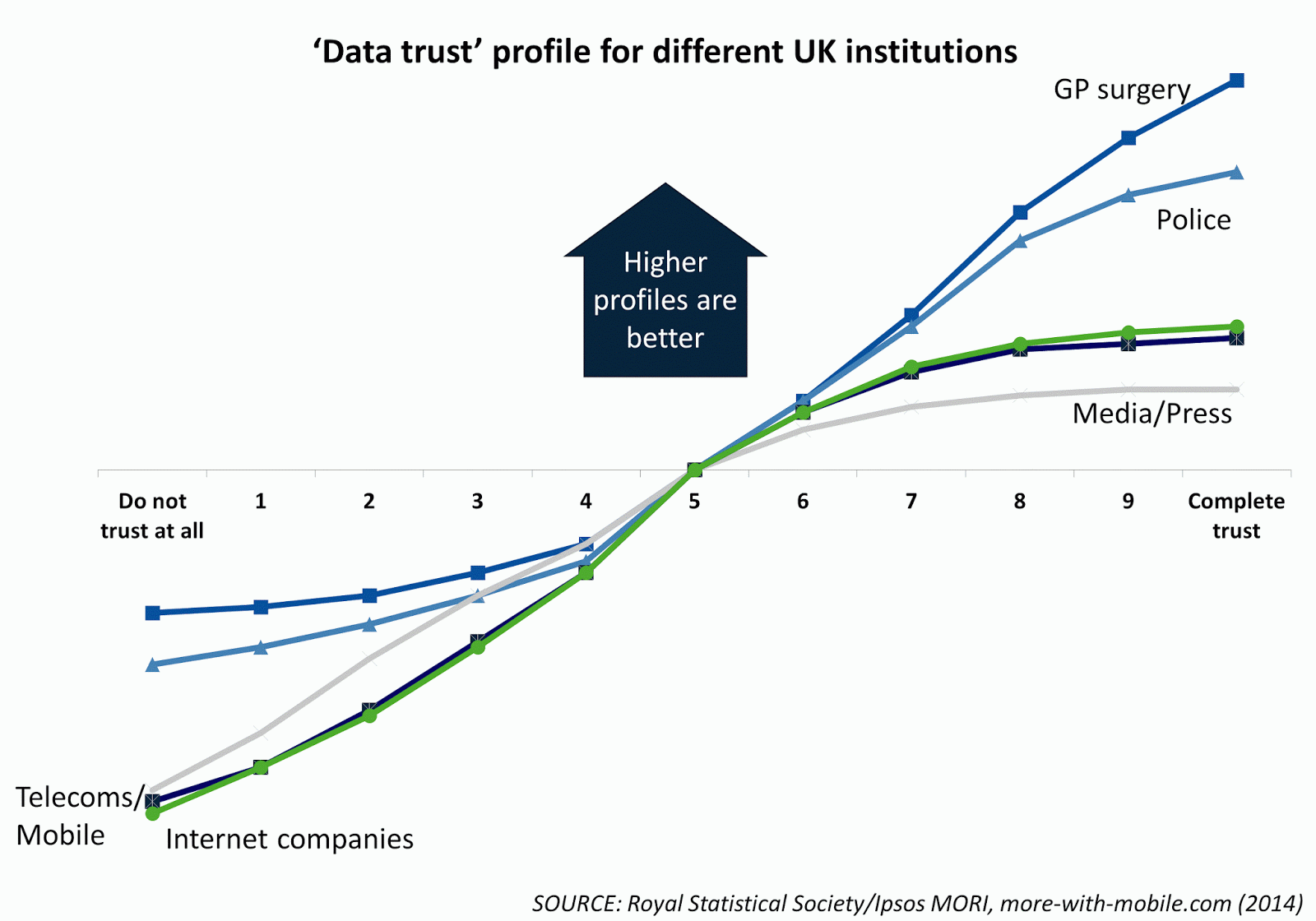 Source: More-With-Mobile
Source: More-With-Mobile
Customers should be clearly informed about what data is being collected, how it is being used, and who it is being shared with if anyone. Moreover, providing customers with easy options to control their data preferences can further enhance trust and demonstrate the company’s commitment to privacy.
9. Fostering Community Engagement
In the dynamic world of telecommunications, fostering community engagement is a strategic approach that can significantly enhance customer loyalty and provide valuable insights into customer needs and preferences. In fact, online communities can help organisations improve engagement by up to 21% (Higher Logic).
By actively engaging with customers, telecom companies can create a sense of belonging and community, which is instrumental in retaining customers and enhancing their overall experience. Here’s how telecom companies can foster robust community engagement:
- Online Forums and Platforms – Establishing and maintaining vibrant online communities is crucial. These platforms should be spaces where customers can freely share feedback, exchange tips, and provide peer-to-peer support.
By facilitating these interactions, companies can not only gather authentic feedback but also allow customers to help each other, which can reduce the strain on customer service channels. Moderation and active participation by the company can ensure that these forums are constructive and positive environments.
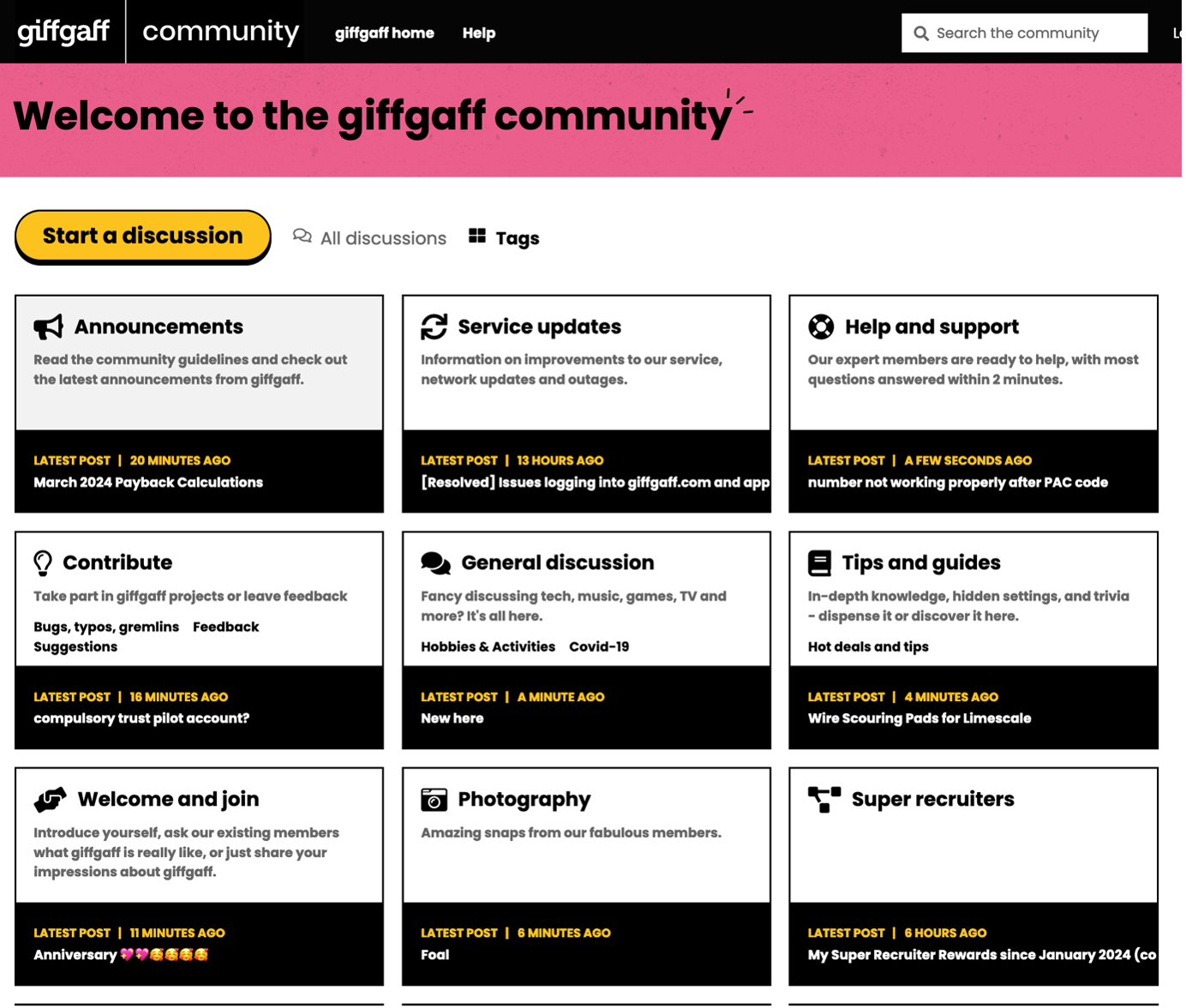 Source: The giffgaff community forum
Source: The giffgaff community forum
- Engagement Events – Hosting regular engagement events such as webinars, workshops, and Q&A sessions with industry experts or company representatives can significantly boost customer engagement. These events provide customers with opportunities to learn more about the products and services offered, understand best usage practices, and get their questions answered directly by experts. Moreover, these sessions can be used to inform customers about upcoming features or changes, ensuring they feel involved and valued by the company.
 #3DollarBaller publicity stunt by Circles.Life to promote the launch of its new unlimited data service for $3 a day.
#3DollarBaller publicity stunt by Circles.Life to promote the launch of its new unlimited data service for $3 a day.
- Customer Advocacy Groups – Supporting customer advocacy groups is another effective way to foster community engagement. These groups serve as a bridge between the company and its customers, providing a structured way for feedback and discussions to flow.
By engaging with these groups, companies can show that they value customer input and are committed to making changes based on that feedback. Furthermore, advocacy groups can help in championing the company’s initiatives and services, acting as organic ambassadors in broader customer segments.

The most engaged users of Deutsche Telekom’s Telekom hilft (Telekom Helps) are invited to join special advocacy programs where they test new products and provide direct feedback to the company.
By implementing these strategies, telecom companies can not only enhance customer engagement but also build a more loyal and satisfied customer base. Online forums and platforms allow for continuous interaction, engagement events foster learning and direct communication, and customer advocacy groups enhance dialogue and promote customer interests. Together, these strategies create a comprehensive approach to community engagement that can drive positive customer relationships and brand loyalty.
Benefits of providing good telecom customer experience
Competitive edge
Telecommunications is a sector that suffers most from customer volatility and, consequently, has a very high level of competition. Customers change providers quickly to get better offers for a lower price. SPs who invest in customer experience are likely to become more competitive and increase the level of their customers’ loyalty. Emphasising outstanding and personalised digital experiences can set SPs apart from the competition that doesn’t deliver on their promises. This can create a sense of uniqueness about your brand.
Customer loyalty
Accenture argues that customer experience has become the single biggest factor driving customer loyalty – and therefore revenue growth – today. A more loyal and involved customer tends to buy 90% more frequently than a customer who does not feel involved with your company. In addition, a loyal customer tends to buy from the same brand and spend more than 60% on a single transaction, thus guaranteeing unit profitability 23% higher than the average customer. Creating loyal customers through good customer service can therefore provide businesses with lucrative long-term relationships. And furthermore, this can convert loyal customers into brand ambassadors.
Economic advantages
The ability to provide good customer experiences requires the implementation of digital technologies. These, in turn, have the power to unlock significant economic value for SPs. For example, providing a self-service environment (that we’ll discuss further later) enables customers to do plenty of tasks on their own. This frees up a lot of SP’s employee’s time that could be allocated to other tasks.
AI and data analytics tools on the other hand allow SPs to better analyse their customer behaviour. And in turn, the information can be used to prevent churn and up-sell and cross-sell relevant products and services. Doing so results in higher revenue and ARPU.
If you can reduce the number of customers lost by as little as 5%, you can expect profitability to increase from 25% to 125%
Capita.com
How to provide an effortlessly excellent telecom customer experience?
In today’s competitive telecommunications landscape, enhancing customer experience is not just an option—it’s imperative for staying relevant and successful. Mobilise offers a comprehensive suite of services designed specifically to transform and elevate the customer experience in the telecom sector. As a leader in the digital transformation of telecom services, Mobilise harnesses the power of cutting-edge technology to provide innovative solutions that cater to the dynamic needs of telecom companies.
Mobilise’s Services for Enhancing Telecom Customer Experience:
- Digital onboarding solutions – leveraging technologies like eSIM
- Customer engagement platform – personalised dashboards and data analytics
- Data-driven insights and analytics – big data analytics
- Omnichannel support system – CRM centralising all channels
Conclusion
In this discussion on enhancing the telecom customer experience, we outlined essential strategies, including integrating advanced technologies like AI and eSIMs, empowering support with sophisticated tools, and developing strong feedback loops. These approaches not only streamline operations but also significantly improve user interactions and satisfaction.
For telecom companies, adopting these practices is crucial to remain competitive in a fast-evolving market. Embracing these customer-focused strategies ensures operational efficiency and builds strong relationships with customers, positioning companies for sustained success. Investing in customer experience is not just beneficial; it’s essential for future growth in the telecom sector. Prioritise customer satisfaction to maintain relevance and achieve long-term prosperity.



